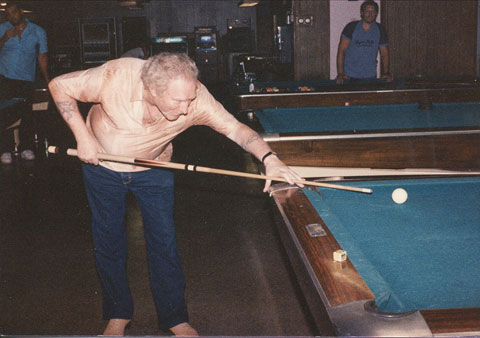I don't think grip hand position has anything to do with how much of the cue's weight is "effective" in the stroke - but even if it does matter, why is moving your hand there during the shot better than starting with it there?Two things come to mind. Can there be more acceleration by adding a portion of the cue stick's weight to the stroke, therefore more power,
If you mean the cue moves less (I don't think the hand moves less), then I'd buy this idea as a corrective measure for a stroke that has a wavering backswing - but I'd rather not need the correction.and/or lessening the physical distance of the backswing and increasing the chance for a truer, more efficient forward movement?
pj
chgo
